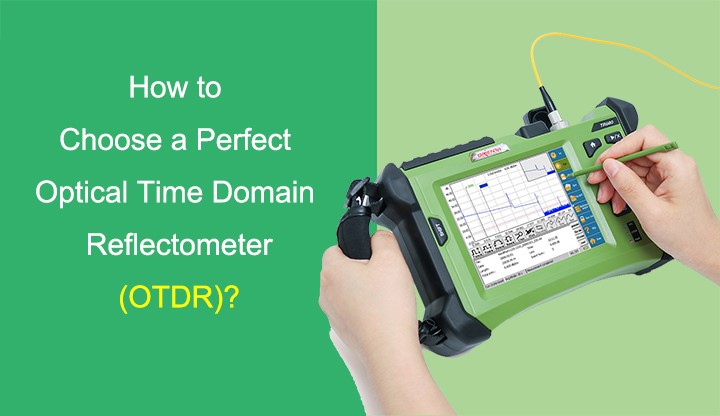The past few years have witnessed the boom in optical fiber being used in network communication industry. In order to make sure that the fiber network is reliable and accessible, a more accurate and faster methodology for assessing the integrity of the infrastructure is indispensable. Therefore, it is essential to choose the right fiber optic testing tool/device: not only to meet the enhanced testing requirements, but also help to increase the reliability and value of the whole network. OTDR is one of the most powerful test instruments for fiber cable testing.
What Is OTDR?
- OTDR (optical time-domain reflectometer) is used to test the performance of newly installed fiber links and detect problems that may exist in fiber links. The purpose of it is to detect, locate, and measure elements at any location on a fiber optic link. An OTDR needs access to only one end of the link and acts like an one-dimensional radar system. By providing pictorial trace signatures of the fibers under test, it’s possible to get a graphical representation of the entire fiber optic link.
- Just by injecting pulsed of light into one end of a fiber and analyzing the back scattered and reflected signals, an OTDR can thus measure:
Optical Distance
- To elements: splices, connectors, splitters, multiplexers
- To faults
- To end of fiber
Loss, Optical Return Loss (ORL)/Reflectance
- Loss of splices and connectors
- ORL of link or section
- Reflectance of connectors
- Total fiber attenuation
Why Need an OTDR?
- Fiber testing plays a significant role in ensuring the network is optimized to deliver reliable and robust services without fault.
For Outside Plants (OSP)
- Service providers and network operators want to insure that their investments into fiber networks are protected. In outside fiber plant, every cable will be tested for end-to-end loss and with an OTDR to ensure the installation was properly made. Installers will be asked to use loss test sets (source and power meters) as well as OTDRs, performing bi-directional tests and providing accurate cable documentation to certify their work. Later, OTDRs can be used for troubleshooting problems such as break locations due to dig-ups.
For Premises, LAN/WAN, Data Centers, Enterprise
- Premises fiber networks have tight loss budgets and less room for error. Installers should test the overall loss budget with a light source and power meter. OTDR testing is a best practice that can pinpoint the causes for excess loss and verify that splices and connections are within appropriate tolerances. It is also the only way to know the exact location of a fault or a break. Testing a fiber link with an OTDR also helps document the system for future verification.
Factors to Consider When Choosing the OTDR
- For different test and measurement needs, there exist a great number of OTDR models, then how to select the right one? A comprehensive understanding of OTDR specifications and the application will help make the choice. Moreover, based on your specific need, you should answer the following questions before looking for an OTDR:
- What kind of networks will you be testing?
- What fiber type will you be testing? Multimode or single-mode?
- What is the maximum distance you might have to test?
- What kind of measurements will you perform? Construction, troubleshooting or in-service?
And when choosing an OTDR, you should take these factors into consideration:
- Size and Weight—important if you have to climb up a cell tower or work inside a building
- Display Size—5” should be the minimum requirement for a display size; OTDRs with smaller displays cost less but make OTDR trace analysis more difficult
- Battery Life—an OTDR should be usable for a day in the field; 8 hours should be the minimum
- Trace or Results Storage—128 MB should be the minimum internal memory with options for external storage such as external USB memory sticks
- Bluetooth and/or WiFi Wireless Technology—wireless connectivity enables easily exporting test results to PCs/laptops/tablets
- Modularity/Upgradability—a modular/upgradable platform will more easily match the evolution of your test needs; this may be costlier at the time of purchase but is less expensive in the long term
- Post-Processing Software Availability—although it is possible to edit and document your fibers from the test instrument, it is much easier and more convenient to analyze and document test results using post-processing software
Conclusion
- An is a vital fiber optic tester for maintaining and troubleshooting optical infrastructures. When choosing your OTDR, first to figure out the applications that the OTDR will be used for, and then check the OTDR’s specification to see if it is suited to your applications. And don’t forget to consider those elements we stated in this article. Hope it would help when you hesitate to make your decision.
